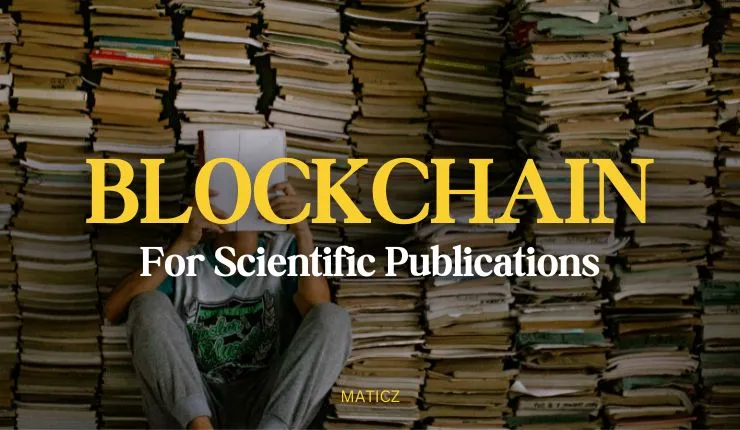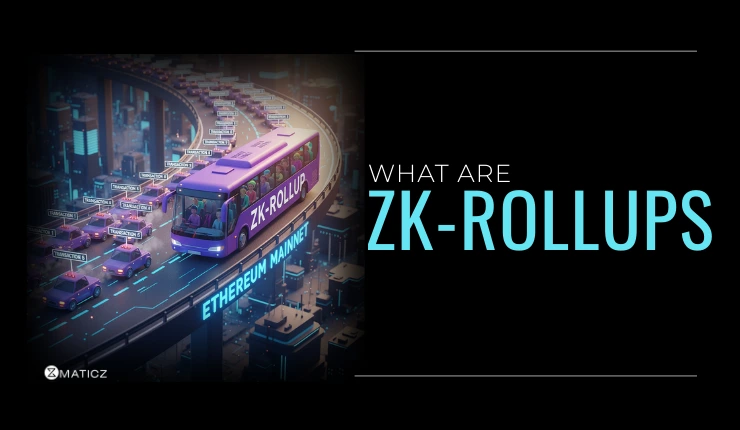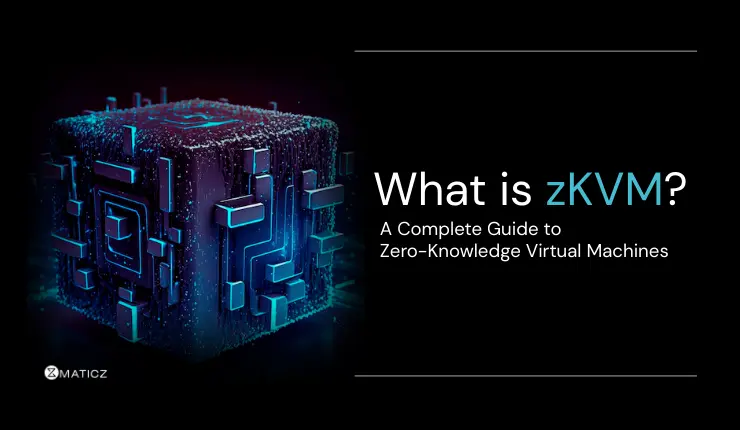Share Posts

Blockchain For Scientific Publications
70
3170
103
Scientific publishing is a profitable industry whose annual profits can go head-to-head with large tech companies. The blockchain that has revolutionized almost all industries has now set foot in the scientific publishing industry. It is approached to innovate the quality of scientific studies, eliminating the shortcomings of the traditional publishing system.
A scientific publication is a written and published report or document of a scientific or medical nature. It mostly includes data, results of any clinical trial, or any other information regarding the Licensed Product.
Traditional publication system has numerous problems to address such as low-quality scientific papers, high publication costs, lack of rewards for contributors, copyrights held by publishers, and slow and biased publication process.
The current scientific publishing system makes documents available to everyone in the scientific community. So others can copy others' experiments and view the results. Also, scientists need to publish theses, conference reports, summaries, and articles on their research to make it reach a large audience.
Even after publishing, sometimes they need to pass the criteria set by the current publication system. This not only slows down the publication process but also there is a risk of not publishing your publication in the right place.
Drawbacks In Traditional Scientific Publication System
Traditional scientific publishing involves submitting the documents to agents or publishers, followed by signing the contract. It is usually done after several rejections and even after that publishers have full control over the work that they can edit it the way they want. Here is a list of some of the common drawbacks found in the traditional publication system.
High Cost
Publishers demand high fees from the authors to publish their works. Authors who put their full effort into putting forth their new ideas into documents or manuscripts get rejected often when they are unable to pay the demanded amount.
Long Publication Time
Even if authors manage to pay huge amounts for publishing, it takes a long time approximately six to twelve months for the current publishing system to publish the papers. Not every author can use free-to-use preprint platforms that are available.
Lack Of Reusability
One of the major disadvantages of the current publishing system is insufficient connections and data sharing among researchers. Researchers need to start from scratch instead of adding new dimensions to the existing studies. It could result in similar ideas and studies.
Hard To Eliminate Plagiarism
Traditional publishing system relies on common plagiarism tools and software that mostly work on predefined rules. Authors can easily avoid plagiarism in their works using advanced writing and paraphrasing tools.
Biased Review Process
There is no transparency in the way the review process is done in the current publishing system. The major reason for biased reviews is the lack of appropriate reviewers for specific domain knowledge. Even the transparent peer review it has recently adopted is also not as effective as expected.
Low Royalty Rewards For Contributors
Authors get very low royalty rewards for their valuable contributions during the evaluation process. Sometimes they don't even get any rewards which discourages authors who want to contribute.
How Does Blockchain Scientific Publishing System Work?
Blockchain offers a decentralized trustworthy environment for scientific publications using a proof-of-work model and transparency across the distributed network. It also uses sophisticated computer programs like Smart contracts that run on the blockchain.
The main purpose of using blockchain is to automate the whole process without human intervention and a biased peer-review process while reducing the publication time and cost.
Blockchain-based scientific publishing platform requires authors to have a wallet to store tokens. Using the wallet, they can easily access this decentralized system and own tokens if needed.
Article Submission
The first step involves submitting articles on the platform. Authors are identified based on the wallet address they use for submission and other blockchain-based identification systems. To submit their work, they should have enough tokens in their balance.
Authorship Validation
As soon as the articles are submitted, the platform automatically proves authorship and adds it to the blockchain system. Information such as terms of the submission, copyright ownership, token costs of submission, and accessibility is mentioned in smart contracts.
Automated Financial Payments
Based on the declarations and agreement of authors, smart contracts cut down a small percentage of payment as a nominal submission fee for submitting articles. Authors need to pay the required amount in the form of cryptocurrency. Facilitated by encrypted distributed ledgers, the blockchain-based publishing platform offers trusted real-time verification of transactions without any intermediaries.
Journal Selection
Once the submission and payments are made, the platform offers a list of suitable journals and publishers for related articles. Authors need to choose the appropriate one from the list. Every information is stored as a block of data with the linked hash of the genesis block and an indicator to metadata.
Appointment Of Editors and Reviewers
Now the system assigns editors for articles. Once the editors are assigned, they need to decide whether the article is sent out for external review or rejected. If the article is accepted for external review, there will be a list of reviewers for editors to select from. Only editors can choose the reviewers from the available list.
Paper Publication
After proper editing is done, the article is published and made available to the public for a small fee. Publishers, editors, and reviewers collectively determine the token cost based on the specific terms mentioned in the smart contract. Unlike traditional publishing systems, the token cost is direct and reasonable in this publishing platform. If the author selects the OA option, then the publisher has to pay token fees for handling editors and external reviewers. Whereas for the non-OA option, the author is solely responsible for token fees.
Use Cases Of Blockchain Scientific Publishing
The scientific publishing system stands on the cusp of groundbreaking transformation with the integration of blockchain technology. Here we have explored some of the important use cases of blockchain in scientific publication.
Automated Financial System
Blockchain offers an automated, decentralized, and secured financial system that allows authors and publishers involved in the publication to control and track financial transactions with no intermediaries.
Immutable Copyrights and Citations
When a scientific work is published, the ownership and usage rights are registered on the blockchain. It creates immutable and verifiable records of references regarding copyrights and citations. This results in enhanced authenticity and credibility of scientific publications.
Plagiarism Detection
Blockchain uses sophisticated and advanced plagiarism detection algorithms to detect the originality of scientific publications. It is easy to find who copied from whom since all the publications come with authentic timestamps. This helps create an environment of innovation and knowledge.
Peer Review Process
Blockchain technology offers a transparent and decentralized peer review process. It is free from all kinds of biases found in the traditional publishing system. Identities, feedback, and revisions of reviewers are recorded immutably, preserving their integrity and authenticity.
Royalty Management
Blockchain uses smart contracts to make sure everyone involved in the publication, including the author, publisher, editor, and reviewer gets their due rewards promptly. The entire royalty management is automated using predetermined rules set in smart contracts.
Data Sharing and Collaboration
Blockchain helps in effective data sharing and collaboration in the scientific publishing process. By recording everything in a unique hash, no third party can alter it. It provides a worry-free solution for scientific publishing platforms to share data in real-time without affecting copyrights.
Benefits Of Blockchain For Scientific Publishing
Blockchain has the potential to revolutionize the scientific publishing industry. Using blockchain solutions can bring numerous advantages over the traditional publishing system in many aspects.
Reward For All Contributors
Rewards are recorded as reputational incentives in the blockchain protocol. Along with the author, other contributors are also rewarded. It provides everyone with fair compensation based on their contributions.
Reasonable Publication Cost
In a blockchain-based publishing platform, every work is automated using a smart contract. Without the need for any manual intervention or assistance, it results in reasonable costs for scientific publications.
Transparent and Seamless Communication
Blockchain technology allows for transparent and seamless communication between authors, publishers, editors, and reviewers on the publishing platform resulting in accessible and time-efficient solutions for scientific collaboration.
Fast Publishing Process
Blockchain scientific publishing platform offers faster and more efficient publishing processes. Blockchain enables smart contracts to streamline the process of reviewing and publishing the author's work.
Smart Wallets For Secure Payments
This scientific publishing platform provides smart and encrypted wallets that allow authors and publishers to make payments using pre-defined cryptocurrencies or tokens for publications. It ensures a secure payment system without the involvement of third parties.
Copyright Ownership
In a blockchain-based publishing platform, when authors submit their work, it is registered on the blockchain. The ownership and usage rights of the publication are permanently stored and cannot be manipulated.
Get Blockchain Solutions For Scientific Publications From Maticz
The idea of leveraging blockchain technology brings together researchers and scientists from different disciplines. It prioritizes authenticity, credibility, and trust to provide a reliable and trustworthy publishing system. If you have any idea of integrating blockchain solutions into the scientific publishing system, approach Maticz.
Maticz is a top blockchain development company that offers a wide range of blockchain services and solutions for a wide array of industries. With a team of well-experienced developers, we power up your scientific publication platforms using blockchain technology. You are just a step closer to planning out the right way to bring blockchain into your business. Get in touch with us right away.
Tap Into the Future
The latest insights, posts, and project updates - straight to your inbox.




